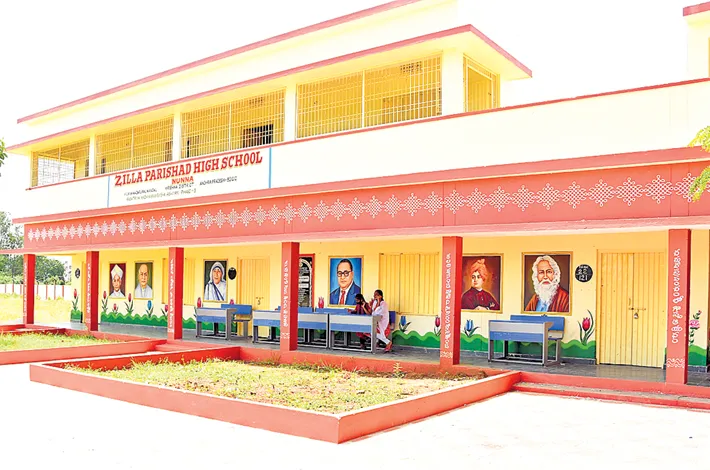Andhra Pradesh to establish 7,500 Model Primary Schools from next academic year
09-02-2025 12:06:56 AM

In a class of its own
* AP Government to set-up 7500 Model Primary schools across the state starting from the next academic year
* Each Model Primary school to have classes 1-5 with one teacher and minimum 50 students per class
* Grades 3, 4, and 5 to be brought back from upper primary to primary
* Teachers believe that establishing more schools, especially the primary schools would benefit the students in rural areas in having better access to proper education
* In municipal areas, these schools will be established by designating each ward as a unit
* No.of single-teacher schools has increased to 12,500. In many of these,single teacher manages multiple grades
KIRANMAI TUTIKA | AMARAVATI
In a significant move to strengthen primary education, the Andhra Pradesh School Education Department has decided to establish 7,500 Model Primary Schools across the state starting from the next academic year. This initiative comes as part of a broader reform plan that includes the revocation of Government Order (GO) 117, issued by the previous administration, and the introduction of a new policy framework to enhance foundational learning.
Under this new model, each Model Primary School will cater to Grades 1 to 5, with one teacher assigned per class. While the initial guideline required a minimum enrollment of 60 students per school, the department has now relaxed this to 50 students to ensure more schools available for the students.
During the previous government’s tenure, Grades 3, 4, and 5 were transferred from primary schools to upper primary and high schools, leading to logistical challenges and concerns from parents and local communities. As part of the education reforms, the state government now plans to bring these classes back to primary schools, integrating them based on recommendations from parent committees and local representatives.
Speaking to Metro India, P. Babu Reddy, General Secretary of UTF stated that establishing more schools, especially the primary schools would benefit the students in rural areas in having better access to proper education. In Fact the true benefits come only after they are equipped with sufficient teacher student ratio. Unlike other schools, even these shouldn’t fall under single teacher schools, as these could hamper the education standards.
To address geographical challenges, basic primary schools will continue to operate in areas where schools are far apart. These schools will also follow the Grades 1-5 structure, and teacher allocations will be determined based on student strength. The revocation of GO 117 will pave the way for a new set of reforms, for which the department has already prepared ground-level proposals.
In municipal areas, these schools will be established by designating each ward as a unit, ensuring that urban students also benefit from improved learning facilities.
One of the challenges currently faced by the public education system in Andhra Pradesh is the growing number of single-teacher schools. With a decline in student enrollment and the previous shift of Grades 3-5 to high schools, the number of single-teacher schools has increased to over 12,500. In many of these institutions, a single teacher manages multiple grades, including Grades 1-2 or even all five primary grades.
To address issues related to teacher allocation and staffing, the Education Department has drafted a Teacher Transfer Policy, which is set to be tabled during the upcoming state budget session. The draft policy will be published on the department’s official website in the next two days, inviting public feedback and suggestions.
The Ideal Primary Schools initiative, coupled with teacher transfer reforms, aims to revitalize the state’s education system by ensuring better teacher-student ratios, reducing single-teacher schools, and enhancing learning outcomes for young students in Andhra Pradesh.








